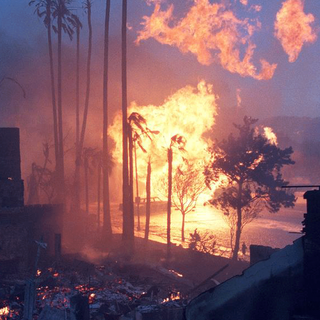Global warming and climate change are now way too close for comfort. The Himalayan glaciers, the world’s third-largest deposit of ice and snow after Antarctica and the Arctic region, are melting at an alarming rate.
A study published in Science Advances stated Himalayan glaciers had lost billions of tons of ice — amounting to a quarter of the entire region’s ice — over 40 years. This is equal to more than a vertical foot and a half of ice each year, according to National Geographic. Plus, the ice stored within the glaciers is also close to reaching its melting point. Melting glaciers are linked to rising sea levels and an increase in heat levels (glacier ice reflects heat back to space).
Related on The Swaddle:
One Million Species Face Extinction Because of Humans: UN Report
Lead author Joshua Maurer told National Geographic that, “Our study reveals a robust signal of glacier ice loss linked to rising temperatures from climate change.” According to data collected from ground stations, temperatures in the region have increased by 1 degree Celsius. This is a huge difference, as the mean annual temperature in the middle of the Ice Age was only three degrees cooler.
Another comprehensive report released earlier this year also warned of the dangers climate change posed to people living in the Hindu Kush Himalayas. The rise in temperature has led to an increase in erratic weather patterns and natural disasters in this region, pushing farmers to move their fields and as formerly reliable streams either run dry or risk flooding. The amount of rainfall the region receives has also weakened, which will result in less water to replenish the glaciers.
Compared to climate change hotspots like Greenland, researchers don’t study the Himalayas as much due to it being a physically difficult region to assess. While Greenland might lose all its ice by year 3000, the Himalayas will lose 66% of its ice by the year 2100.
However, there is still hope. Researchers at Swansea University managed to come up with a new material that can capture carbon dioxide, a common greenhouse gas, with the help of a common epoxy resin — i.e. glue. “We show that small epoxy molecules typically found in glues can stick larger ones together to make effective carbon capture materials potentially useful to tackle climate change,” said Dr. Enrico Andreoli, who led the research that is now the subject of a paper published in the journal Chemistry of Materials.
Without significant advancement in carbon-capturing technologies and radical shifts in the way we currently use resources that add to greenhouse gas emissions, people living in mountainous regions like the Himalayas — and eventually all of Asia — will have dire natural consequences in their future.




